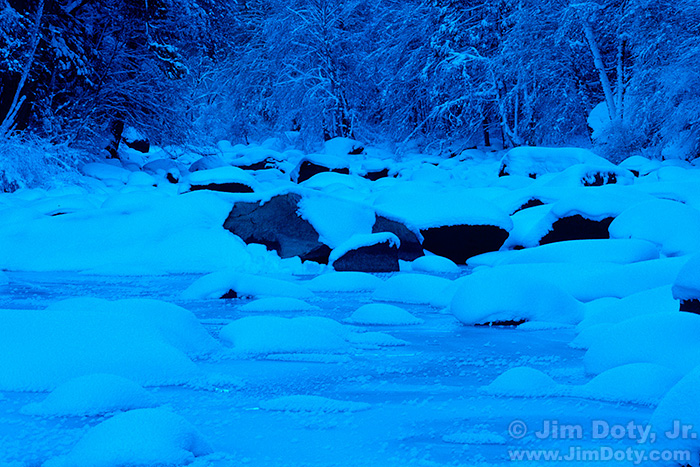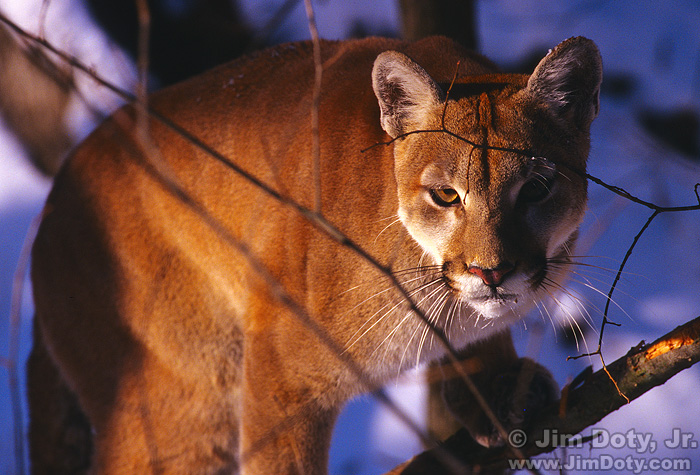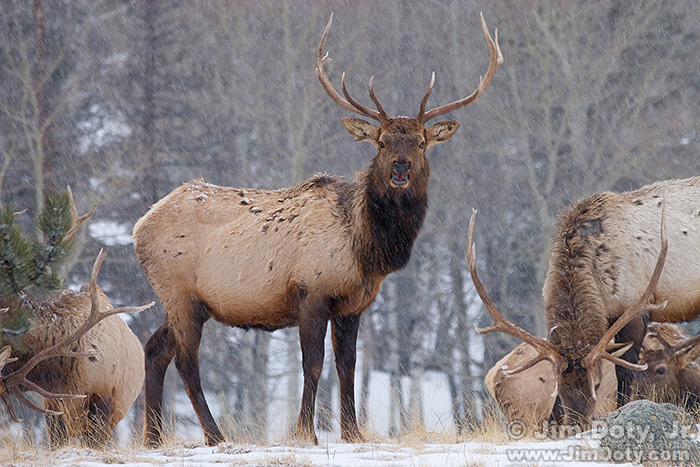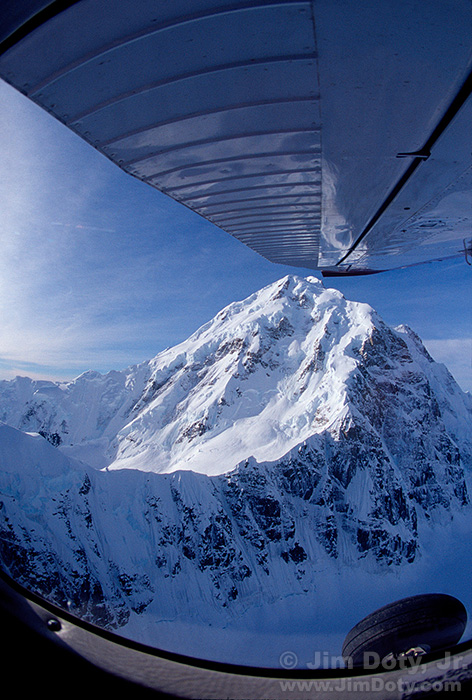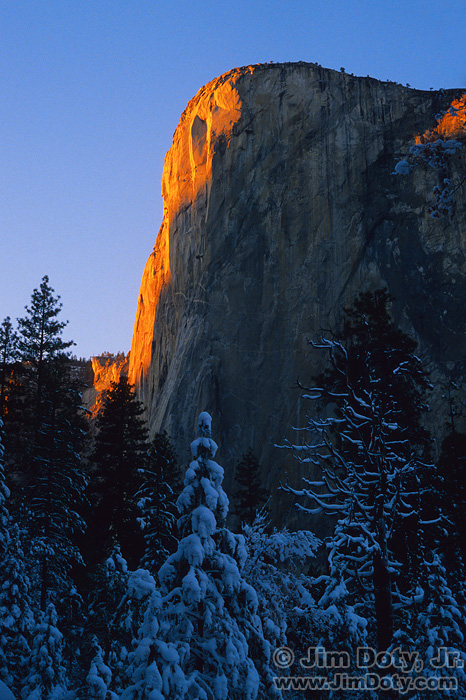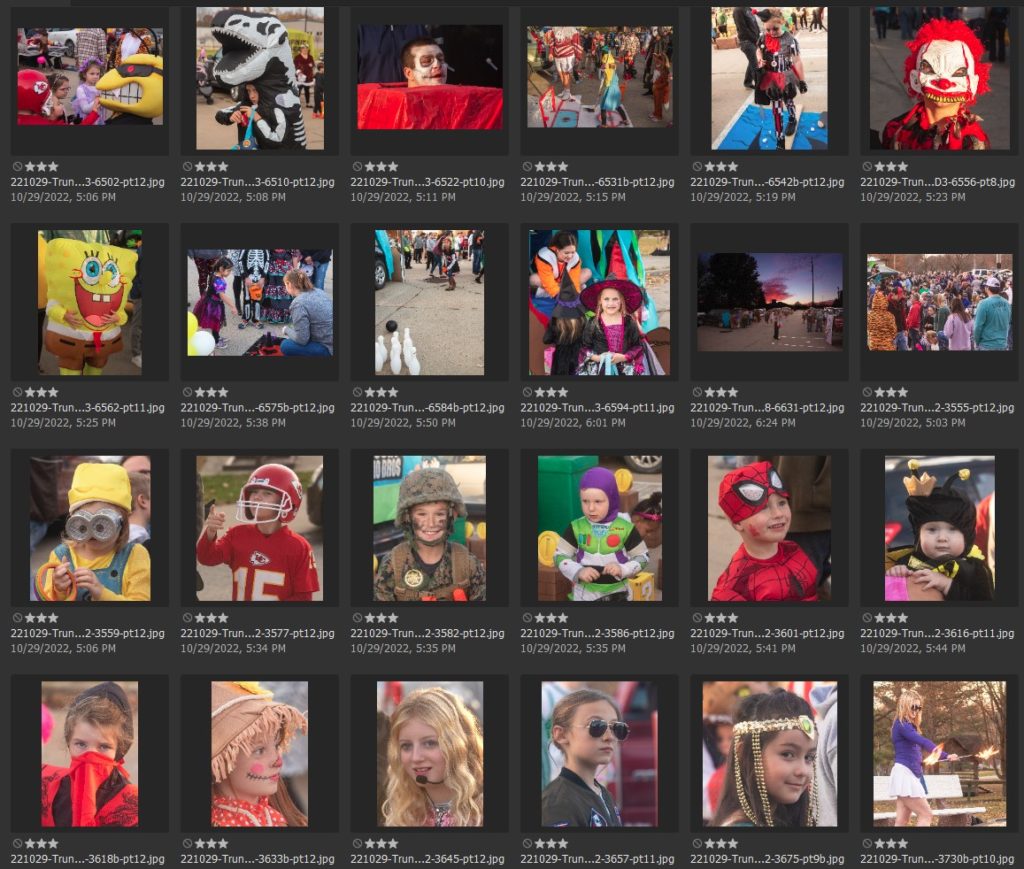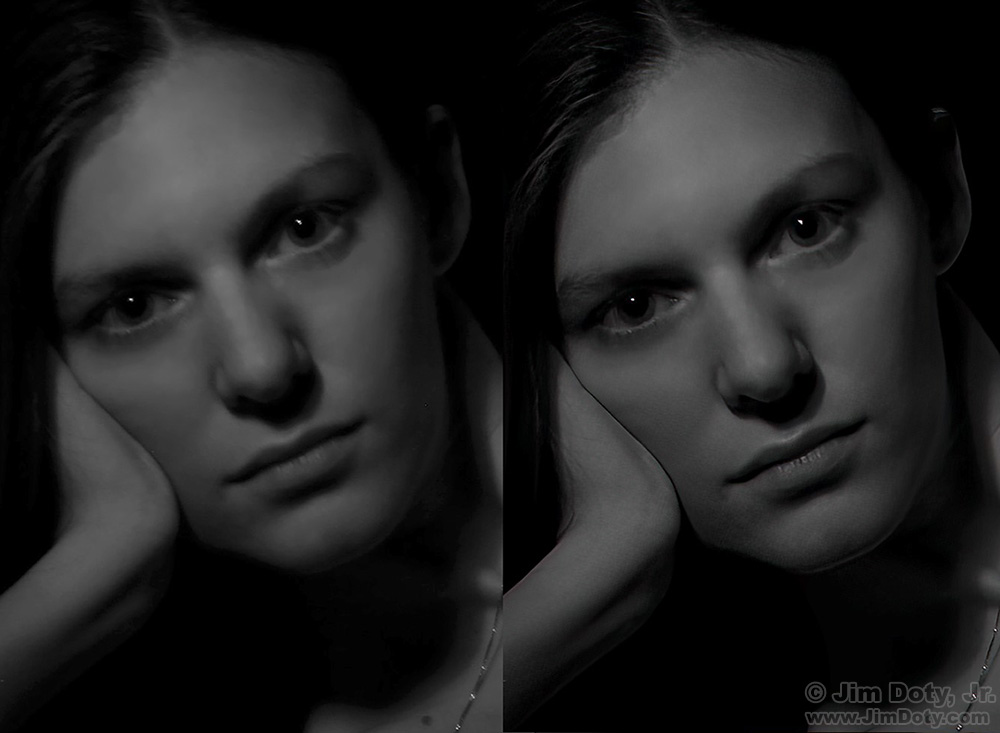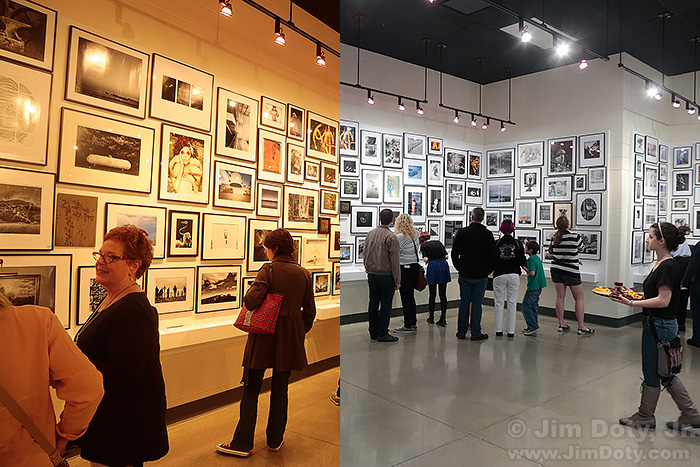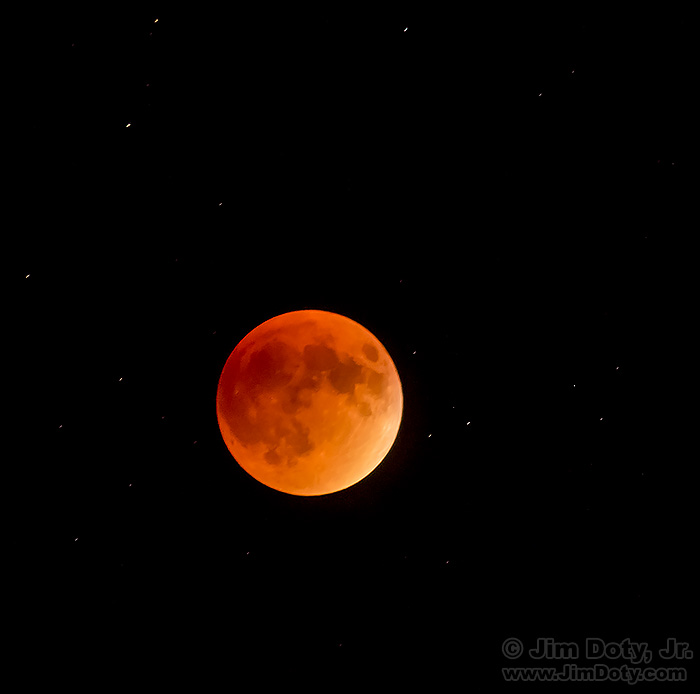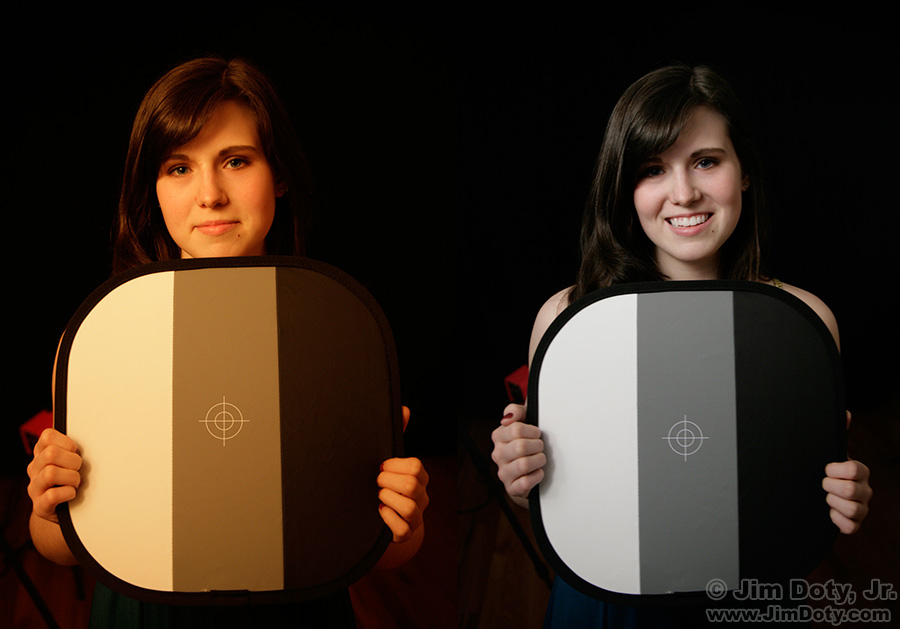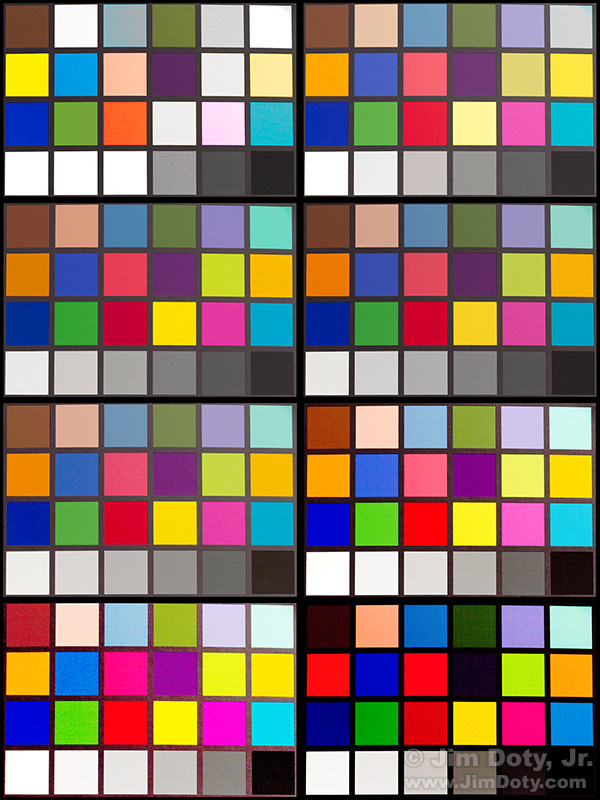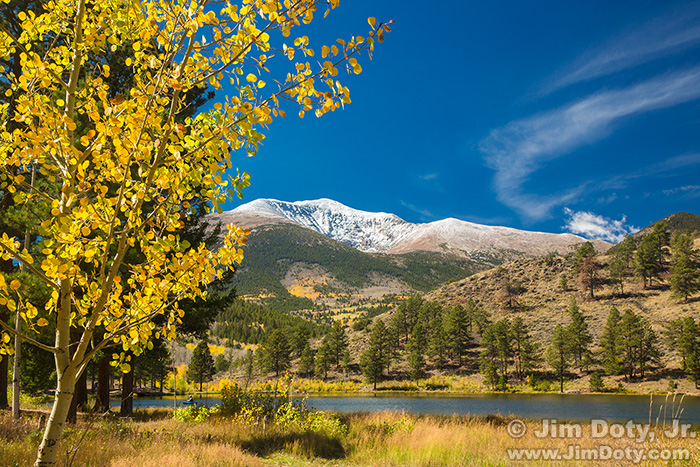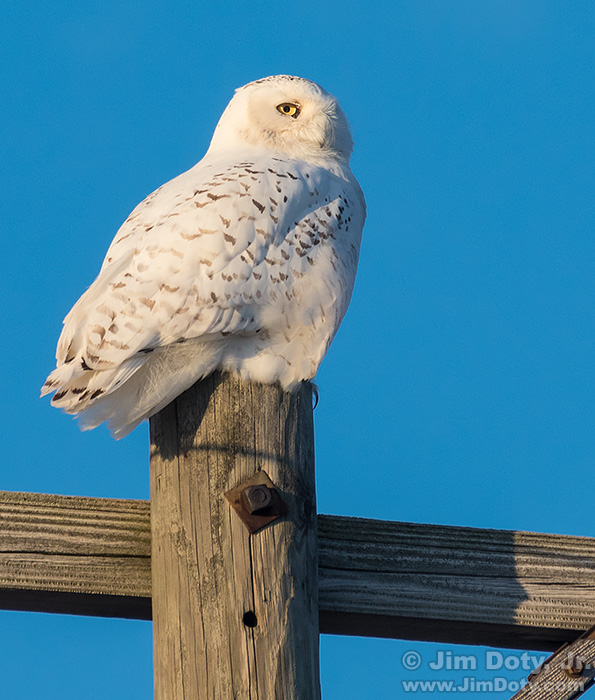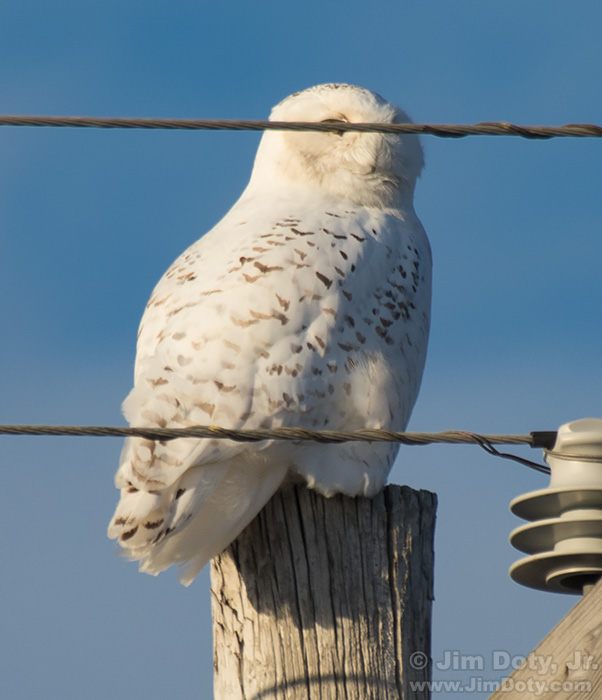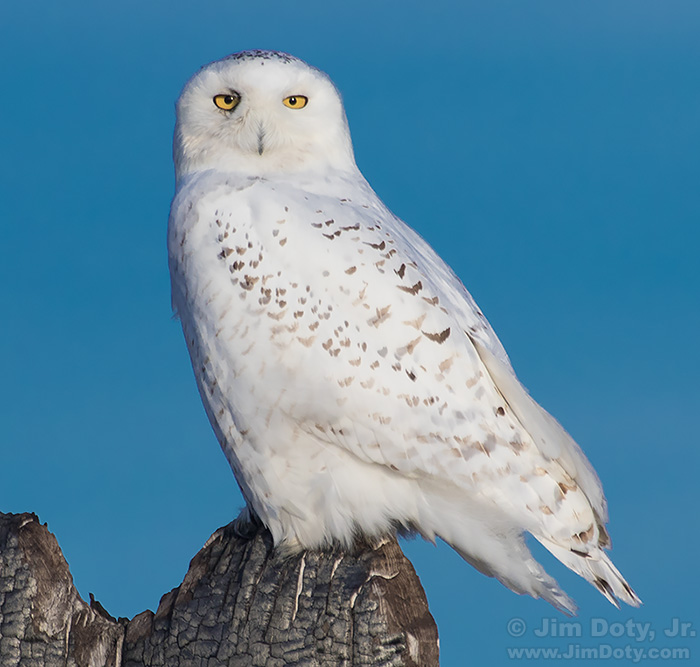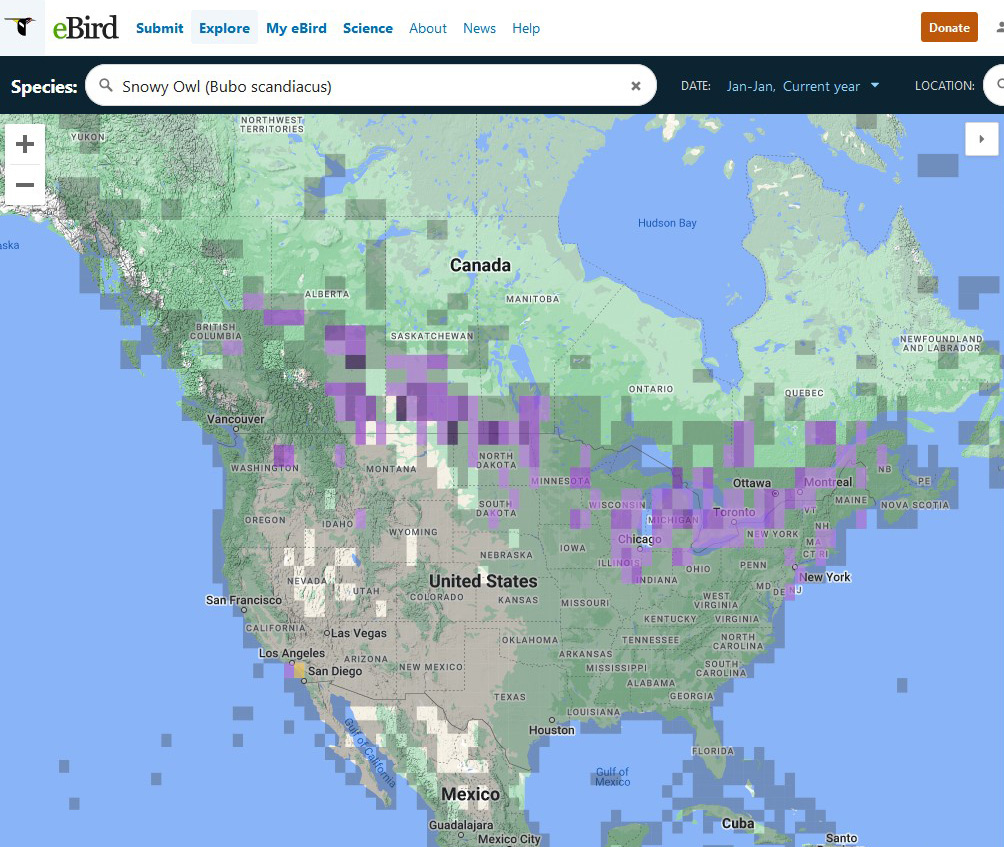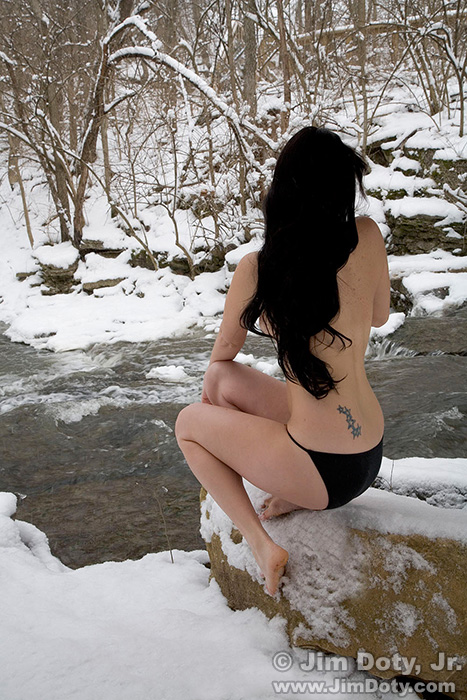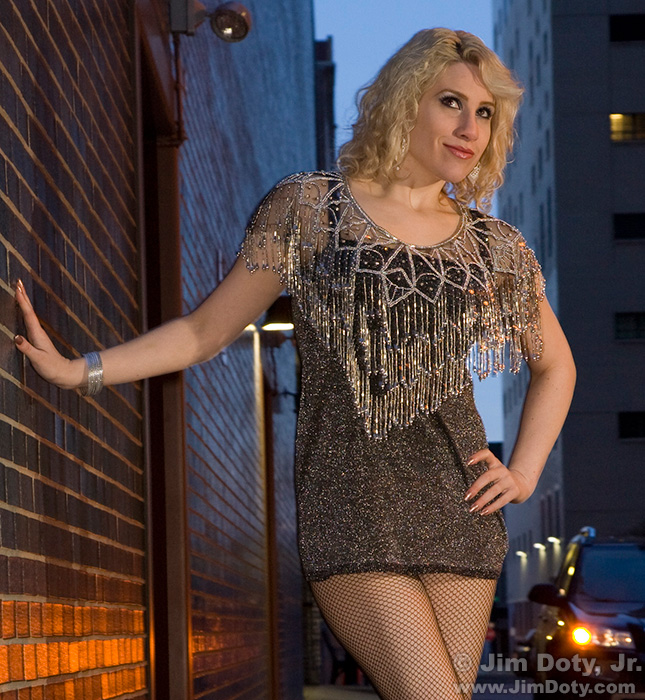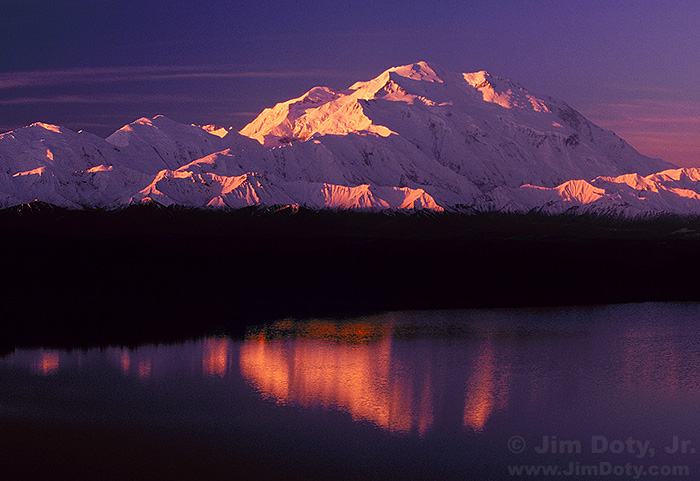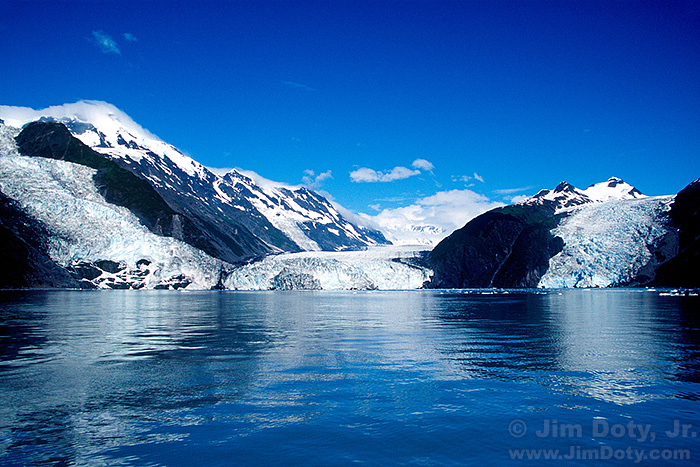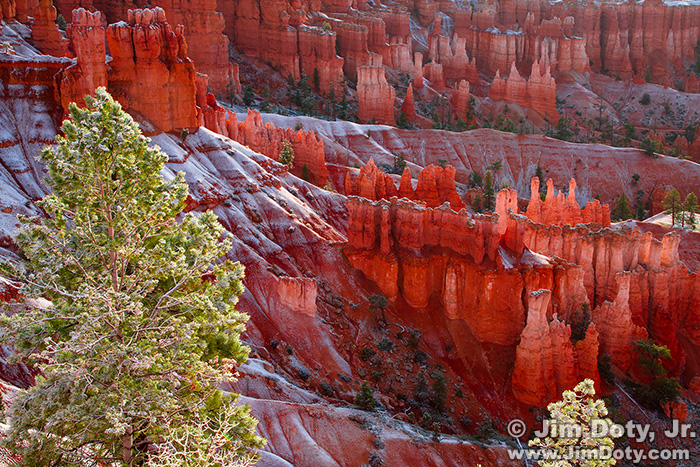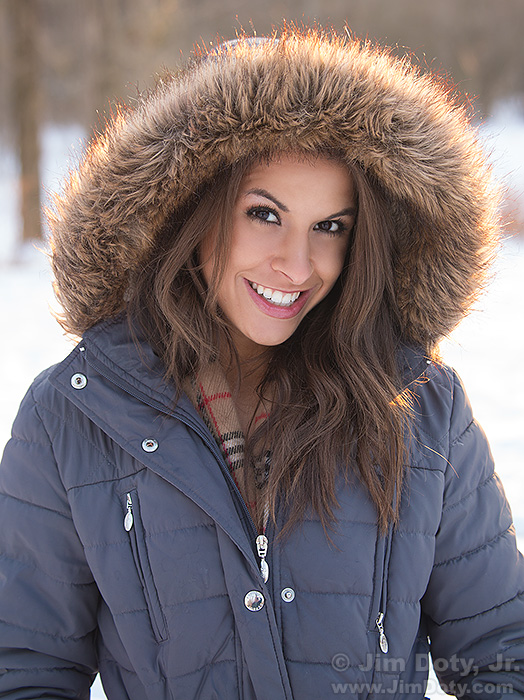Just like metering daytime winter scenes, the key to metering evening winter scenes is knowing what to meter and deciding how much exposure compensation to use.
Category Archives: Using Equipment
Metering Wildlife in the Snow, Part Two
Most wildlife are medium to dark in tone, making them a challenge to meter properly in the bright, white tones of winter. If you trust one of your camera’s automatic exposure modes, the odds are good you won’t get the best exposure. If you switch over to manual exposure and make the right decisions, you can get great exposures and better quality photos (more about that later).
Metering Wildlife in the Snow, Part One
Metering dark toned wildlife in the snow is a major exposure challenge. It is usually best to avoid large “burned out” areas (washed out, featureless white) in a nature or landscape photograph, but with properly exposed snow, the wildlife can be so dark as to lose all texture. On other hand, metering for the wildlife can burn out the snow. So what do you do? And what about the complications of metering white animals?
Metering Daytime Winter Scenes
Metering for scenes with a lot of snow can be tricky since the bright snow fools the camera meter. I see a lot of winter photos with gray snow, which means the camera meter did exactly what it was designed to do. The solution is quite simple provided you know what to do.
How To Series: Winter Photography
In addition to all of the usual photographic challenges, winter provides some extra complications, especially in terms of metering. So I began this series of articles on winter photography. Check out the links below. The articles will help you meet the unique challenges of winter photography. So get out there, have fun, and create some great winter images!
Trunk or Treat: Choosing the Best Event Photos
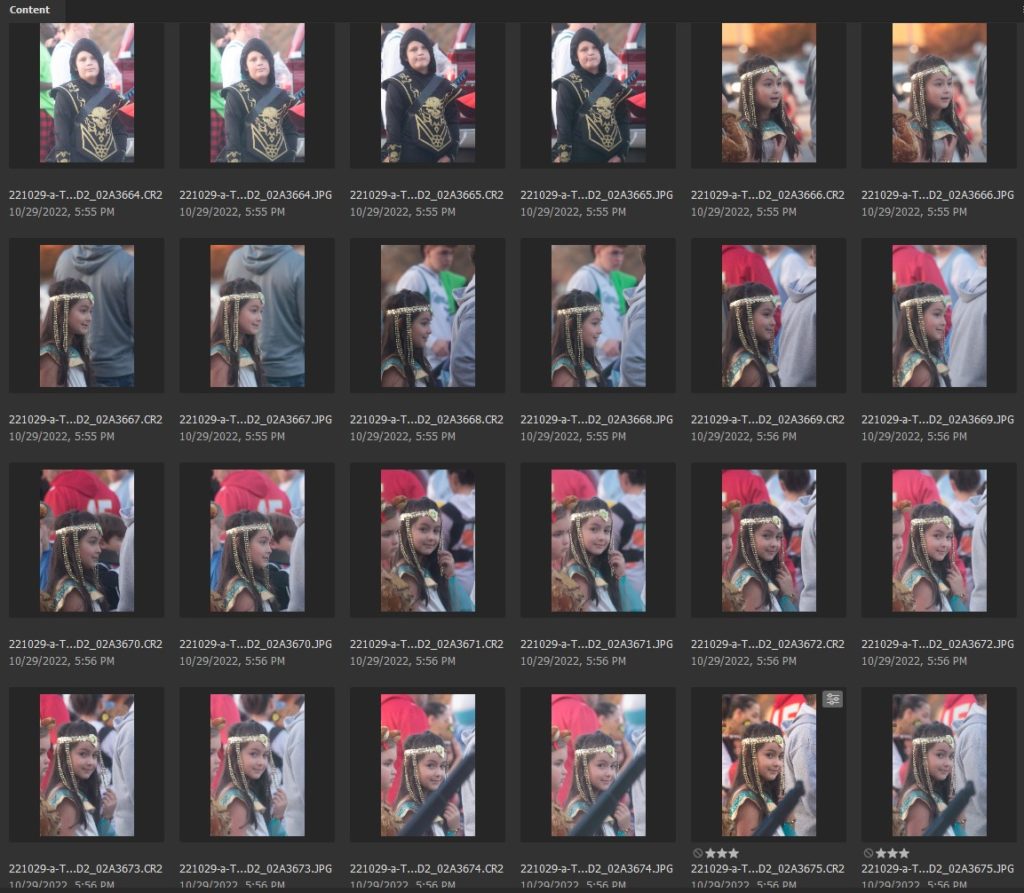
At my first newspaper gig in Oklahoma (back in the 1980s), I learned to take a lot of photos at busy events. Photographing active children is a game of percentages. You might take a half dozen or more images of one trick-or-treater to get the shot you want, or maybe none of the images “work” and the moment is gone. So you take a lot of pictures.
Camera Equipment and Settings for Event Photography
Last Saturday I photographed a Trunk or Treat event for the local newspaper. I took 361 photos with two DSLRs, plus 5 more with my iPhone. On my first cut I picked 63 images. After the last cut I was down to 24 images which I optimized and sent to the paper. In this article I shared the equipment and camera settings that I used.
Topaz Sharpen AI
The more I work with Topaz Sharpen AI, the more impressed I become. Topaz uses artificial intelligence to sharpen images that are not quite sharp.
The 30 Second Secret to Great Colors
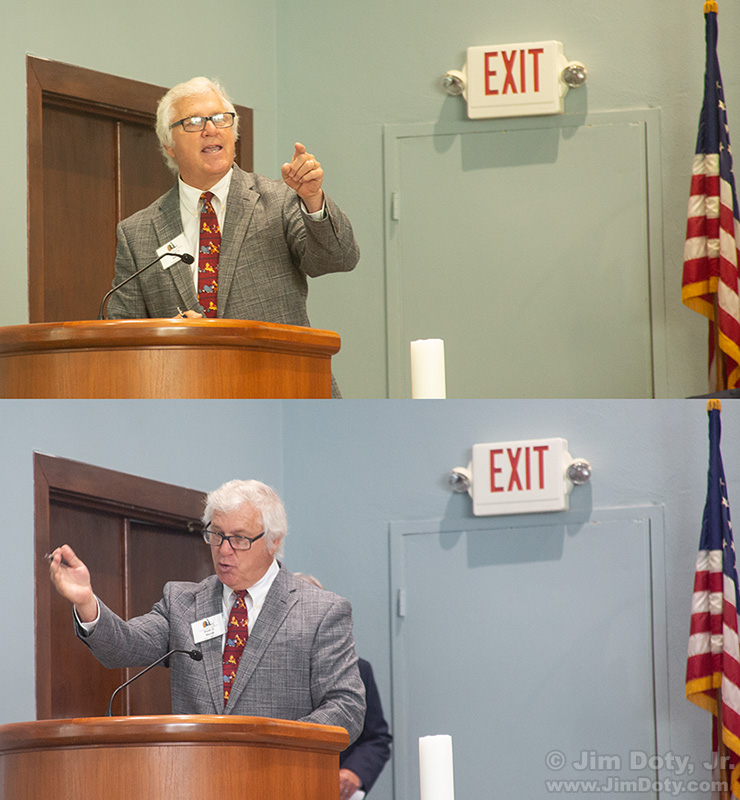
30 seconds of your time can make the difference between disappointing colors and great colors. That is the difference between these two photos. The top image is skewed toward yellow and green tones. It is most obvious in the white part of the EXIT sign, the white stripes of the U.S. flag and the white candle next to the speaker’s podium. The speaker has yellow-ish skin and and the blue walls are greenish in the top photo. In the bottom image all of that has been fixed. The flag looks much better, the candle is pure white, and the blue walls are actually blue. Most important, the skin tones (my primary goal) are so much better. The yellow skin is gone.
The “Custom White Balance” Series
How To Photograph the Super Flower Blood Moon Eclipse, May 15-16, 2022
Don’t miss it. This is the first of only two total lunar eclipses this year. This total eclipse happens this Sunday-Monday, May 15-16 (depending on our time zone). This article will show you how to photograph it. To see it, just walk outside and look. Continue reading
Why and When To Set A Custom White Balance
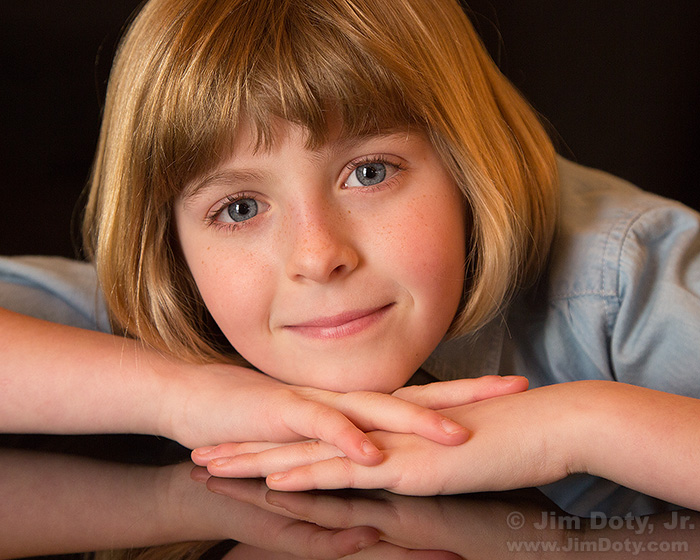
Why set a custom white balance? The answer is simple. To get the best, most accurate colors your camera is capable of producing. It is especially important when photographing people if you want beautiful, accurate skin tones. In this article I give you some shooting tips, answer common questions, and I cover the situations when it is preferable not do a custom white balance.
How To Set A Custom White Balance on Your Digital Camera
To get the most accurate colors your camera is capable of creating you need to set a custom white balance. Every camera does this a little differently, but it involves taking a picture of an 18% gray card (or something pure white) and using that photo as a standard to create a custom white balance setting. I will show you the process with a Canon camera, but other brands should be somewhat similar. Check your camera’s manual for specific instructions.
Setting a Custom White Balance Will Save You a Lot of Time
Setting a “Custom White Balance” at the beginning of a photo shoot will save you a lot of time. It will only take a minute or so and can save you a lot of work later on. Think how long it would take you to color correct 250 images.
How To Test Your Camera’s Color Exposure Latitude
Testing your camera’s color exposure latitude is a key to getting good color in your digital photographs. This is a sequel to The Best Colors Come From the Best Exposures. I would suggest you read that article first.
Your Camera Does NOT Capture Reality! – And What To Do About It.
You have heard it said a lot, and maybe said it yourself: “This picture doesn’t do the scene justice.” That is often true and for several reasons. One is that digital cameras do not capture reality. No matter how fancy or expensive, digital cameras simply do not capture what your eyes see. That is also true with film cameras. All color photographic films have different color characteristics. Some have better reds, others have better greens or blues. Some are more saturated and others less saturated. But none of them are totally color realistic. So why don’t digital cameras give you realistic images and what can you do about it?
Originally posted December 16, 2015. Revised and re-posted January 18, 2022.
How to Photograph a Musician in the Cold and Snow
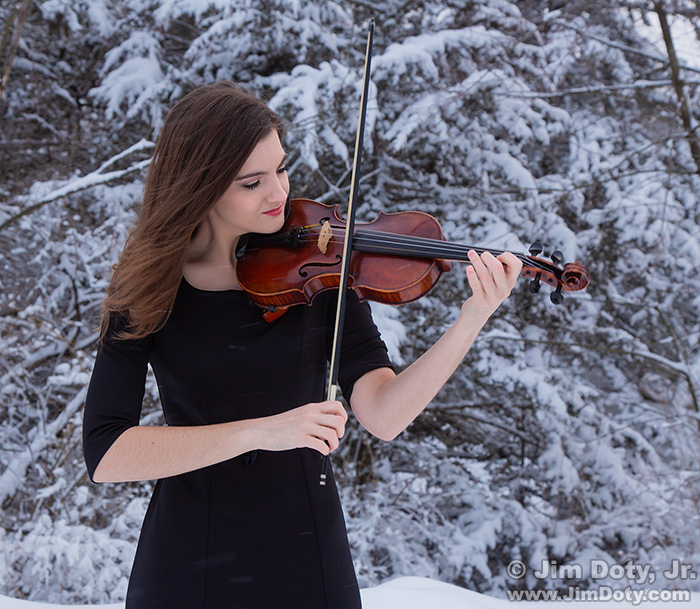
It was my happy privilege to do winter portraits of Beth Presler who is a superb violinist. This article has suggestions for photographing any musician on a cold, snowy winter day.
How To Series: Snowy Owl Photography
If there are cold enough temperatures and plenty of snow cover on the ground, the northern United States has a winter invasion of Snowy Owls. These are magnificent creatures and well worth your photographic time and attention. This series is filled with tips on how to find and photograph snowy owls.
Snowy Owl Photography: Solving A Photo Problem (And the Right Way to Exit Your Vehicle)
When I am traveling with my highly trained and high paid photographic assistant it is his job to remove trash barrels when they are in the way, cut down trees that spoil my view, run out into the meadow and scare off the cow elk that are in front of the bull elk I want to photograph, rip boards off of old barns that don’t look quite distressed enough, pull on the whiskers of a sleeping cougar to wake it up, and cut down utility lines that are obstructing a clear view of my subject. But he wasn’t with me on this trip due to sitting in jail over a minor incident in Yosemite. So I had a challenge on my hands that I had to solve myself.
I am kidding, of course. The prior paragraph was inspired by really crazy things a few photographers do but shouldn’t be doing.
A Snowy Owl Photo Expedition
What is a Snowy Owl expedition really like? This article is your chance to find out. Join me for a two day photo safari! I give you tips and photo suggestions along the way, and you get to see how I prepare, plan, and adapt on a photo trip. I tell you what went right and what went wrong so this is also about what to do when things don’t go according to plan.
How to Find and Photograph Snowy Owls
How to Photograph a Nude Model in the Cold and Snow
It is difficult enough to create a beautiful nude image under normal circumstances, much less in the cold and snow. You need to bring some significant skills and experience to the task. So does your model.
How To Work With A Model (or Anybody Else) When The Windchill is 4°
You would think a windchill of 4° Fahrenheit (-16°C) would be too cold for a photo shoot, but not with some models. We booked this January shoot weeks in advance so we knew it would be cold, but we had no idea how cold until the day arrived. Here’s the story behind this image and how to work with a model (or anybody else) when it is so cold.
The Sunny f16 Rule Isn’t Reliable in Winter
The Sunny f16 rule is really useful on bright sunny days in the spring, summer, and fall, but you can’t rely on it for accurate exposures on bright, snowy winter days. It will often lead you astray and you will have seriously blown out highlights. There are much more accurate ways to meter in the winter.
Testing Your Camera’s Snow Exposure Latitude
The “snow exposure latitude” for every camera is different. You won’t find it in your camera’s manual but it is easy to determine with a do-it-yourself test. Why does it matter? If you don’t know the snow exposure latitude for your camera and how to apply it to your images, the color and quality of your winter photos will suffer.
How to Protect Your Camera Gear in the Cold and Snow
Cold and snow can cause a lot of damage to your camera gear. Something as simple as shooting outside and taking your camera inside your house or car can cause hidden damage that won’t show up until days or weeks later. The simple steps in this article could save you hundreds of dollars in repair bills.
Metering Wildlife in the Snow, Part One
Metering dark toned wildlife in the snow is a major exposure challenge. It is usually best to avoid large “burned out” areas (washed out, featureless white) in a nature or landscape photograph, but with properly exposed snow, the wildlife can be so dark as to lose all texture. On other hand, metering for the wildlife can burn out the snow. So what do you do? And what about the complications of metering white animals?
Metering People in the Snow
The white snow in a winter scene can and often does fool a camera meter into underexposing a portrait, so here are the steps to take to get the right exposure. I throw in a few portrait suggestions too.
Metering Daytime Winter Scenes
Metering for scenes with a lot of snow can be tricky since the bright snow fools the camera meter. I see a lot of winter photos with gray snow, which means the camera meter did exactly what it was designed to do. The solution is quite simple provided you know what to do.
How To Series: Winter Photography
In addition to all of the usual photographic challenges, winter provides some extra complications, especially in terms of metering. So I began this series of articles on winter photography. Check out the links below. The articles will help you meet the unique challenges of winter photography. So get out there, have fun, and create some great winter images!

